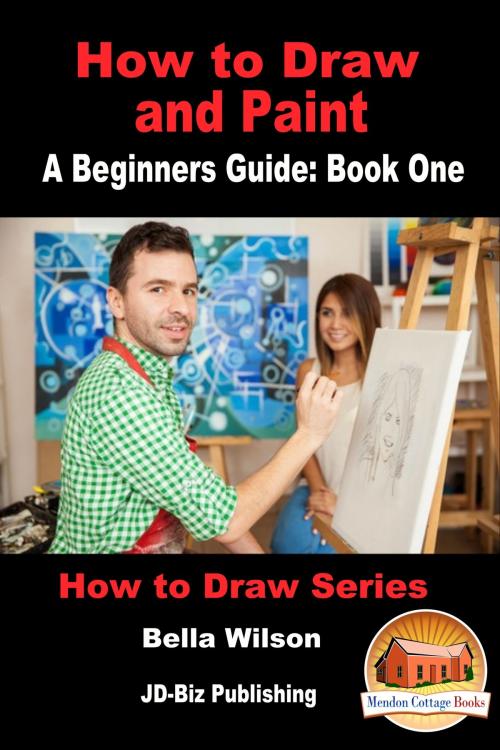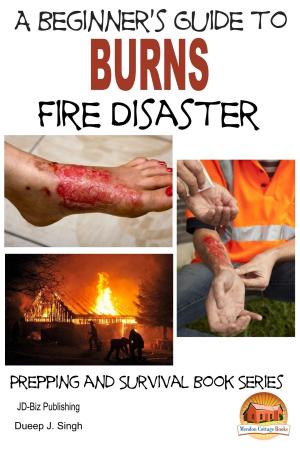How to Draw and Paint: A Beginner’s Guide: Book One
Nonfiction, Home & Garden, Crafts & Hobbies, Art Technique, Painting, Art & Architecture, General Art| Author: | Bella Wilson | ISBN: | 9781370343935 |
| Publisher: | Mendon Cottage Books | Publication: | June 25, 2017 |
| Imprint: | Smashwords Edition | Language: | English |
| Author: | Bella Wilson |
| ISBN: | 9781370343935 |
| Publisher: | Mendon Cottage Books |
| Publication: | June 25, 2017 |
| Imprint: | Smashwords Edition |
| Language: | English |
Table of Contents
Introduction
Chapter 1: Materials
Sketchbooks and Paper
Pencils
Erasers
Rubber Erasers
Art Gum Erasers
Kneadable Erasers
Vinyl Erasers
Drawing Board
Bulldog Clips
Sharpener or Knife
Fixative
Chapter 2: Drawing - Lines
Doodling
Blind Contour Drawing
Jug and Cylindrical Tin
Straight Line
Chapter 3: Shading
Composition
Chapter 4: Perspective and Foreshortening
Chapter 5: Circles in Perspective
How to Draw Ellipse
Putting It All Together
Vintage Radio Still Life
Wine Bottle Still Life
Kitchen Utensil Still Life
Kitchen Item Still Life
Flower Vase and Picture Still Life
Conclusion
Author Bio
Publisher
Introduction
If you’ve ever had the urge to draw, you may have been put off by the thought of all that expensive equipment and all those costly supplies. What if I told you that the only things you needed to get started were a pencil, paper and an eraser? You can find pencils and erasers anywhere. You’ve probably been using them since kindergarten and have a few round the house. Are you daunted by the fact that you’ve often heard that this is a talent possessed by the few who are born with it? The fact is that learning art is just like learning any other subject, and even if you never learn to be a Leonardo or a Van Gogh, you will always get better with practice. And by the way, you’ll have a lot of fun!
As I said, you really do not need a lot of expensive material to start off with, but it’s best to collect what you will need a long time before so that you are ready to hit the ground running. Do some research or ask someone more experienced to help you with your shopping list. This way you’ll avoid wasting time and money.
I recommend drawing at home or in a studio at first, because you have control over everything you’re doing, you’re in a familiar setting and the objects around you are well known. As well as this, your light source will not change so dramatically as if you were outdoors, you will not run the risk of thundershowers and high winds blowing your paper away and you can get to the toilet if you need to! Outdoor work can wait till later on when you’re more confident and more experienced. Another idea is to join a club where you can work in a studio with a teacher and a group of other students so you can all learn from each other. This is a powerful tool. There is also a social aspect in the gathering of people with a like-minded interest.
Table of Contents
Introduction
Chapter 1: Materials
Sketchbooks and Paper
Pencils
Erasers
Rubber Erasers
Art Gum Erasers
Kneadable Erasers
Vinyl Erasers
Drawing Board
Bulldog Clips
Sharpener or Knife
Fixative
Chapter 2: Drawing - Lines
Doodling
Blind Contour Drawing
Jug and Cylindrical Tin
Straight Line
Chapter 3: Shading
Composition
Chapter 4: Perspective and Foreshortening
Chapter 5: Circles in Perspective
How to Draw Ellipse
Putting It All Together
Vintage Radio Still Life
Wine Bottle Still Life
Kitchen Utensil Still Life
Kitchen Item Still Life
Flower Vase and Picture Still Life
Conclusion
Author Bio
Publisher
Introduction
If you’ve ever had the urge to draw, you may have been put off by the thought of all that expensive equipment and all those costly supplies. What if I told you that the only things you needed to get started were a pencil, paper and an eraser? You can find pencils and erasers anywhere. You’ve probably been using them since kindergarten and have a few round the house. Are you daunted by the fact that you’ve often heard that this is a talent possessed by the few who are born with it? The fact is that learning art is just like learning any other subject, and even if you never learn to be a Leonardo or a Van Gogh, you will always get better with practice. And by the way, you’ll have a lot of fun!
As I said, you really do not need a lot of expensive material to start off with, but it’s best to collect what you will need a long time before so that you are ready to hit the ground running. Do some research or ask someone more experienced to help you with your shopping list. This way you’ll avoid wasting time and money.
I recommend drawing at home or in a studio at first, because you have control over everything you’re doing, you’re in a familiar setting and the objects around you are well known. As well as this, your light source will not change so dramatically as if you were outdoors, you will not run the risk of thundershowers and high winds blowing your paper away and you can get to the toilet if you need to! Outdoor work can wait till later on when you’re more confident and more experienced. Another idea is to join a club where you can work in a studio with a teacher and a group of other students so you can all learn from each other. This is a powerful tool. There is also a social aspect in the gathering of people with a like-minded interest.















